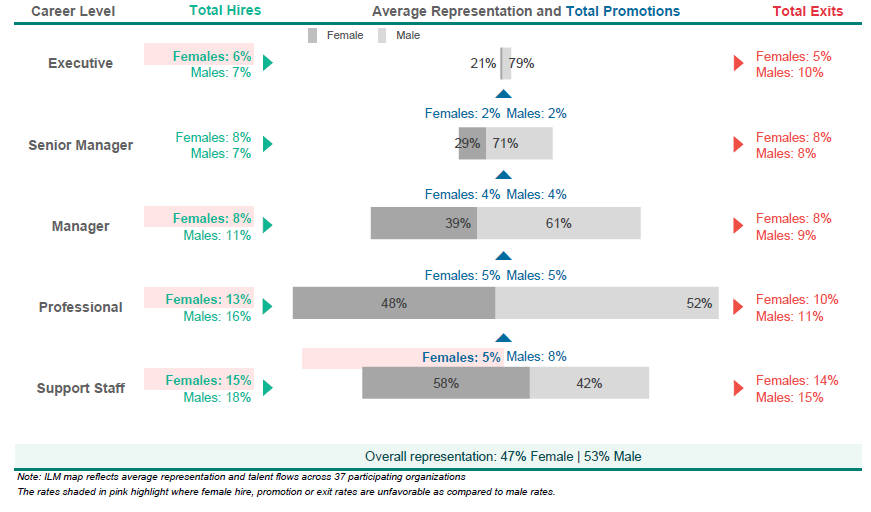
In a 2015 report, The Power of Parity, McKinsey & Co. concluded that if women fully participated in the world economy, global GDP would increase $28 trillion by 2025. India alone could account for $770 billion of that amount.
In the United States, according to a recent study by Citi, racial inequality cost the economy as much as $16 trillion over a 20-year period.
The benefits of gender and racial equality - the diversity and inclusion objectives now embraced by much of the corporate world - are more and more evident. The tide rose and prosperity spread during years of economic growth. Will the pandemic-constrained economy put these gains and commitments at risk?
“The global pandemic has certainly brought to light a renewed focus on diversity and inclusion, reinforcing the reality that we are all in this together,” Debra Walton, chief revenue officer of Refinitiv, said in September when the financial data and technology company released its annual Diversity & Inclusion (D&I) Index,
Those advocating greater representation of women in executive suites were heartened when Citigroup - which ranks 60th on the D&I Index top 100 - designated Jane Fraser as its next CEO, effective in February.
|
Ranking |
Company |
Overall Score |
|---|---|---|
|
1 |
BlackRock, Inc. |
81 |
|
2 |
Natura & Co Holding SA |
80.25 |
|
3 |
Accenture Plc |
80 |
|
4 |
Royal Bank of Canada |
79 |
|
5 |
Industria de Diseno Textil SA |
78.5 |
|
6 |
L'Oreal SA |
78 |
|
7 |
Allianz SE |
77.75 |
|
8 |
Telecom Italia SpA |
77.75 |
|
9 |
Novartis AG |
77.5 |
|
10 |
Bank of Nova Scotia |
77.25 |
“The global pandemic and social unrest this year has reinforced the focus on diversity and inclusion in the workplace coming from different business stakeholder groups,” said Elena Philipova, global head of ESG at Refinitiv. The D&I Index, now in its fifth year, based on hundreds of environmental, social and governance data points and topped by asset management giant BlackRock, “emphasizes the critical importance for companies to commit to, measure and report on their diversity journey beyond gender. Sustainable and resilient workforce is the fuel for businesses especially during volatile times.”
Gaps Remain
And yet, only 37 of the Fortune 500 corporations are led by women, and minorities remain significantly under-represented on corporate boards, according to an Institutional Shareholder Services ESG analysis reported in the New York Times.
Those boards must contend with the reality, as expressed in a Bloomberg Professional Services blog article last year, that “companies that do not evolve with the times, embody the principles of their target markets and implement clear diversity initiatives will quickly find themselves struggling to retain clients - especially in light of the wealth transfer to the millennial generation that is expected in the next five to ten years.”
In support of women, companies have altered workspaces to be more accommodative to breastfeeding mothers, implemented leadership development programs, and encouraged women to enter into traditionally male sectors such as manufacturing.
For When Women Thrive, Businesses Thrive, Mercer analyzed workforce gender equality in multiple industries and geographies. “The overall representation of women at an average organization is 47% across all functions and career levels,” Mercer senior consultant AyÇe Nisancioglu writes. “Women comprise 58% of support staff and 21% of executives. Among [126] financial services organizations participating in the survey, there are fewer women compared to men entering the workforce, and women are hired at lower rates compared to men in all levels, except the senior manager level.”
Internal Labor Market Map on Financial Services Organizations

Job Loss
Historically, in economic downturns, men's jobs have been more at risk than women's, owing to men's greater representation in sectors such as manufacturing. In the recession of 2007-'09, 5.5 million men lost their jobs, versus 2.5 million women. Sectors hit hardest by COVID-19 - leisure and hospitality, health and education, and retail trade sectors - have a disproportionately high number of female employees, making them 1.8 times more likely than men to lose their jobs,” McKinsey says.
An analysis by Ashoka University economics professor Ashwini Deshpande found that in India, men lost 100 million jobs in April 2020, as opposed to 17 million women. However, absolute numbers can be deceiving. When compared to March-April of 2019, 29% of men reported a loss in employment in April 2020, women 39%. The pandemic has left a larger percentage of women unemployed.
In India's informal sector, in 2017-18, 4.9 million domestic workers were considered regular but unprotected, two-thirds of them women. Current social distancing norms disallow these women from working, meaning that if they were the sole earners in their family, they have no source of steady income. Even in those sectors where working from home is a possibility, women face considerable difficulties.
Childcare and Chores
The advances of women in the corporate world, and into jobs that were traditionally male, has contributed to a redefinition of conventional gender roles. The expectation that women must still manage their household has not abated, however. Working women have had to devise ways to manage their work, their home lives, and raise their children. Having different physical spaces - home and office - can be helpful for balancing these activities. The pandemic has upended this idea entirely.
The closure of schools and offices forces all family members to stay at home and figure out a new dynamic. With parents working from home and having to care for children with little to no chance of getting additional help, women seen a regression in role expectations. An OECD report found that women in India on average spend six hours a day on unpaid care work, while men spend 36 minutes on the same.
In the context of the pandemic, a Boston Consulting Group study of working parents in the U.K., U.S., France, Germany and Italy found that women are currently spending 15 more hours on household and childcare activities per week than men. The results are reinforced by Cambridge-INET Institute in Inequality in the Impact of the Coronavirus Shock: Evidence from Real-Time Surveys
“When men went to war in times when conquest and bravery were the proud badges to wear, women stepped up and supported the soldier in every way they could,” said an Economic Times article. “The working woman has been largely lonely in contrast, in a society that still can't see women as holding important positions at work that cannot be compromised.” It seems to be accepted now that when push comes to shove and a choice must be made about whose job is more important, the woman's job takes a back seat, and she is duty-bound to take household responsibilities. If support systems - extended family, household help, day-care centers - crumble, so may women's professional prospects.
Waning Productivity
The amount of time that women are spending on unpaid care work cuts into what they can devote to their jobs. A study by the Institute for Fiscal Studies in the U.K. found that “mothers are doing paid work during 2 fewer hours of the day than fathers, but they do childcare and housework during 2 more hours each. Mothers combine paid work with other activities (almost always childcare) in 47% of their work hours, compared with 30% of fathers' work hours.”
A report published in Nature said the number of hours that female academics were able to dedicate to research during the pandemic has come down significantly. This was, again, owing to the increased time spent on childcare and housework. Such impacts could set back the cause of women for future generations.
The U.S. employment report for September 2020 showed the percentage of women working or actively looking for work was 55.6%, the lowest since 1987 (with the exception of last April and May). “We know that women leaving the workforce to care for children for a while has lasting effects on their earnings, their seniority and their climb up the ladder,” Julia Pollak, a labor economist with the career site ZipRecruiter, told the New York Times.
Digitization and Credit
Some of the touted benefits of digitizing the workplace are heightened efficiency, greater flexibility, faster implementation and the like. But how does the digitization benefit women?
A lot of small-scale female entrepreneurs in services such as salons, food catering and boutiques have lost their livelihoods due to the pandemic. The impact of digitization is questionable.
However, should the digitization within these sectors be designed in such a way that it increases access to formal credit for these women, it may be beneficial. Currently, small-scale women entrepreneurs have a tough time accessing loans to fund their enterprises, but digitizing their banking and simplifying the credit process may ultimately help then to revive their businesses.
For women working in sectors where digitization is possible, perhaps more research needs to be done to determine mental health effects. Working from home has brought om feelings of isolation and depression. Although work-from-home is intended to offer more flexibility, it could also be argued that the workday for women never seems to end, and there is no clearly defined line between work and home life.
Sustain the Commitment
COVID-19 has brought about unforeseen changes in the lives of everyone, forcing adaptation to a “new normal.” Still unresolved is the question of who bears the brunt of this adjustment.
Despite all the strides toward gender equality, there has also been a reversion to conventional roles that may set women back by a decade or two. Avoiding this dismal outcome will require a policy response by governments and companies. Writes Bloomberg Opinion columnist Elisa Martinuzzi, “As governments shift from handing out financial lifelines to restarting and rethinking their economies, they could tie aid to goals of sustainability, such as improving the balance of women in companies' leadership.”
Diversity and inclusion efforts can suffer when survival is at stake. Ian Cook, vice president of data analytics company Visier, argues that D&I must be strongly embedded in decision-making processes so that companies remain true to their values and uphold commitments that they have made to their employees, especially during a time of crisis. And this is sure to reward them in the long run.
“Make sure that inclusion is a core value of the organization - not just something you do to 'check a box,'” leaders of the Center for Talent Innovation (CTI) and Center for Workforce Excellence wrote in Harvard Business Review. “For instance, when CTI's CEO Pat Fili-Krushel was head of HR at Time Warner, they instituted a tracking and reporting system to measure progress against the diversity and inclusion goals for each division. Leaders were held accountable with 10% of their bonuses tied to their goals.”
This is the 21st century. It is a shame that many women still have to explain equality to men. While ways of nature cannot be questioned or undone, in most other areas, let merit alone be the deciding factor. Society and culture change when people want them to change. And this change cannot be brought about by just women. Men must equally participate in bringing about the change that is on their lips, but not always in their actions (- well, for most. Not all).
Sai Nitya Bodavala is a student at the University of Hyderabad. Nupur Pavan Bang (npbang@gmail.com) is associate director, Thomas Schmidheiny Centre for Family Enterprise, Indian School of Business.